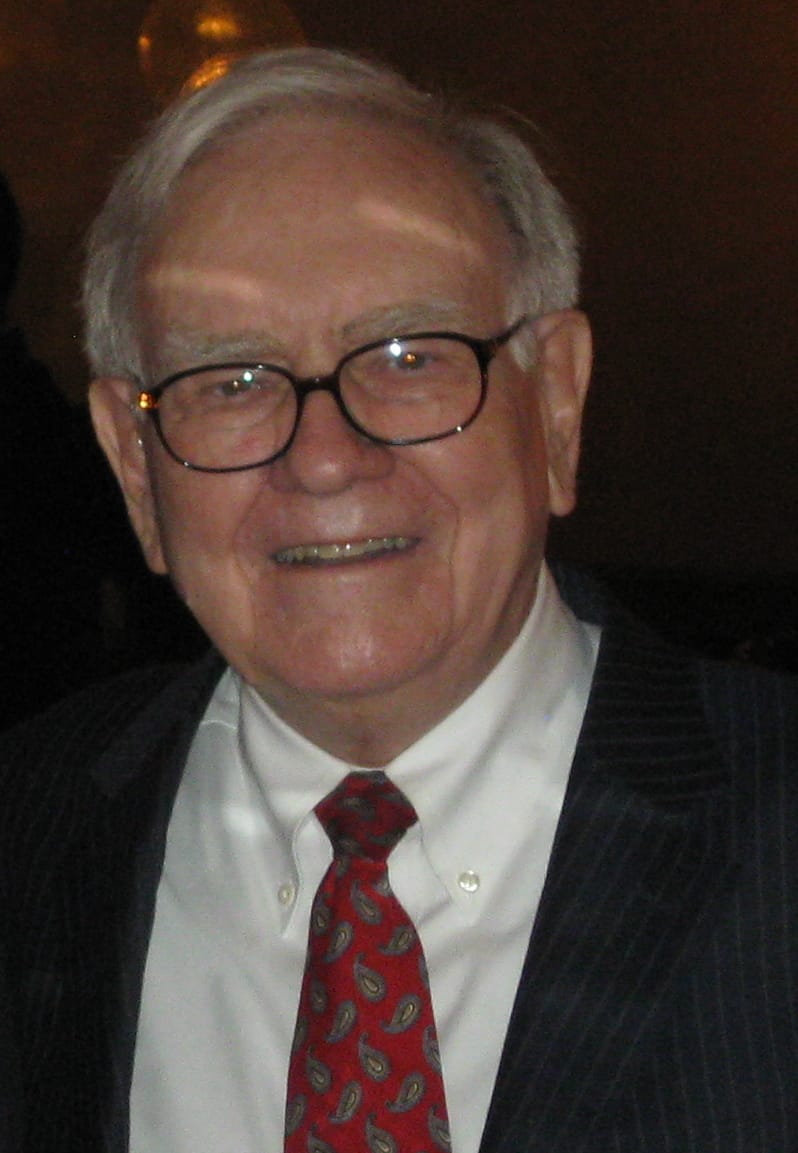
Madonna Louise Ciccone has commanded global attention for over four decades, transforming from a determined young dancer with $35 in her pocket to one of the most influential and commercially successful artists of all time. Her career is a testament to relentless reinvention, artistic audacity, and a profound understanding of popular culture, consistently pushing boundaries and sparking dialogue across music, film, and societal norms. Born into a devout Roman Catholic family, her early life was marked by both academic discipline and an unconventional spirit, setting the stage for a trajectory that would defy expectations at every turn.
Her journey from the suburbs of Michigan to the vibrant streets of New York City in the late 1970s embodies a singular ambition. This period of artistic discovery and personal hardship laid the groundwork for a phenomenon that would redefine pop stardom. This article delves into the formative experiences, strategic career moves, and pivotal moments that shaped Madonna into the enduring cultural icon she remains today, examining how she navigated critical acclaim, widespread controversy, and continuous evolution throughout the early stages of her unparalleled career.
From her initial forays into rock bands to her groundbreaking solo debut and subsequent multi-platinum albums, Madonna meticulously crafted an image that captivated audiences worldwide. We will explore the key albums, tours, and media confrontations that characterized her rise, demonstrating her shrewd ability to integrate diverse influences and provoke discussion, cementing her status not merely as a pop star, but as a significant cultural architect whose early work continues to resonate globally.
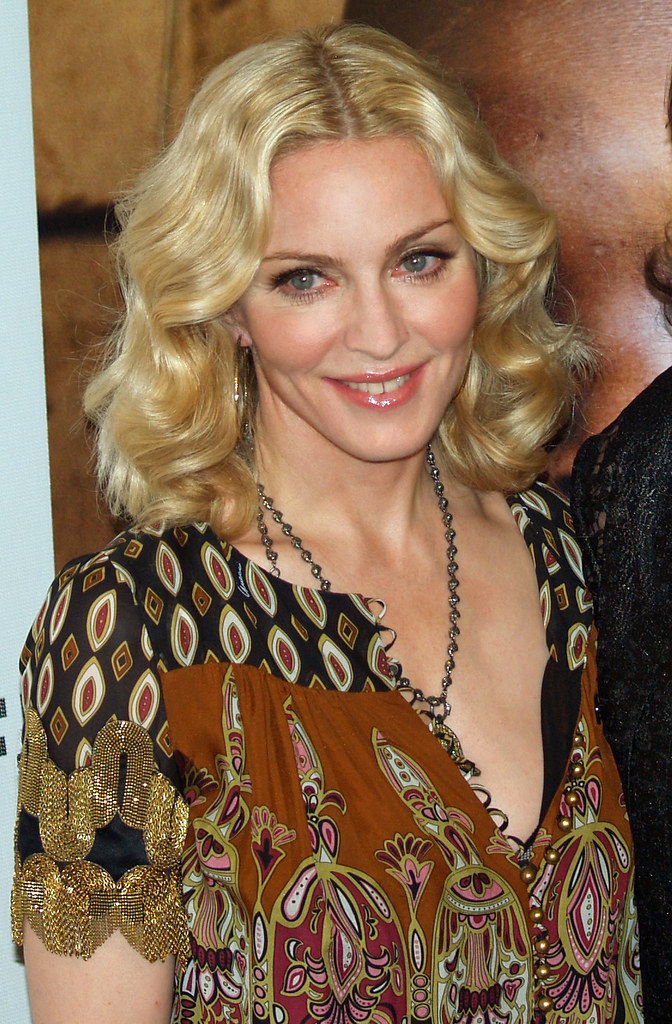
1. **Early Life and Formative Years: The Genesis of a Rebel (1958-1978)**Born Madonna Louise Ciccone on August 16, 1958, in Bay City, Michigan, her early life was rooted in a Roman Catholic household, with parents Madonna Louise (née Fortin) and Silvio Anthony “Tony” Ciccone. Her lineage was a blend of Italian emigrants from Pacentro on her father’s side and French-Canadian descent from her mother. Her father, Tony Ciccone, contributed to military projects as an optics engineer for Chrysler Defense and its successor, General Dynamics Land Systems, providing a structured, if not artistically stimulating, environment.
The profound loss of her mother to breast cancer on December 1, 1963, when Madonna was just five years old, cast a long shadow over her childhood. Growing up in the Detroit suburbs of Pontiac and Avon Township, alongside two older brothers and three younger siblings, Madonna experienced a significant family restructuring when her father married the family’s housekeeper, Joan Gustafson, in the same year. This early bereavement, coupled with the arrival of a stepmother and subsequent half-siblings, profoundly influenced her nascent identity.
Educated at St. Frederick’s and St. Andrew’s Catholic Elementary Schools and West Middle School, Madonna was recognized for her academic prowess, maintaining a high grade point average. However, it was her unconventional behavior that often garnered attention; she was known to perform cartwheels and handstands in hallways and pull up her skirt during class. Reflecting on this period, she articulated a sense of being a “lonely girl who was searching for something,” driven not by rebellion for its own sake, but by a deep-seated desire “to be somebody” and excel.
Despite her father’s initial push towards classical piano lessons, Madonna successfully petitioned to pursue ballet, a decision that proved pivotal. Her ballet teacher, Christopher Flynn, recognized her raw talent and became an early mentor, ultimately persuading her to consider a career in dance. After graduating from Rochester Adams High School as a straight-A student and cheerleading squad member in January 1976, she secured a dance scholarship to the University of Michigan, further honing her craft at the American Dance Festival.
In 1978, a pivotal moment arrived when Madonna, with just $35 in her pocket, made the audacious decision to drop out of college and relocate to New York City. She described this move as “the bravest thing I’d ever done,” navigating the unfamiliarity of plane travel and taxi cabs to find an apartment in the East Village’s Alphabet City. During this period, she undertook various jobs, including hatcheck girl and elevator operator, while intensely pursuing her dance education at institutions like the Alvin Ailey American Dance Theater and under the tutelage of Martha Graham, eventually performing with Pearl Lang Dance Theater. This challenging period also included a traumatic incident where she was held at knifepoint and assaulted, an event she later described as a profound realization of her own vulnerability, a “taste of my weakness” that she could “never forget.”
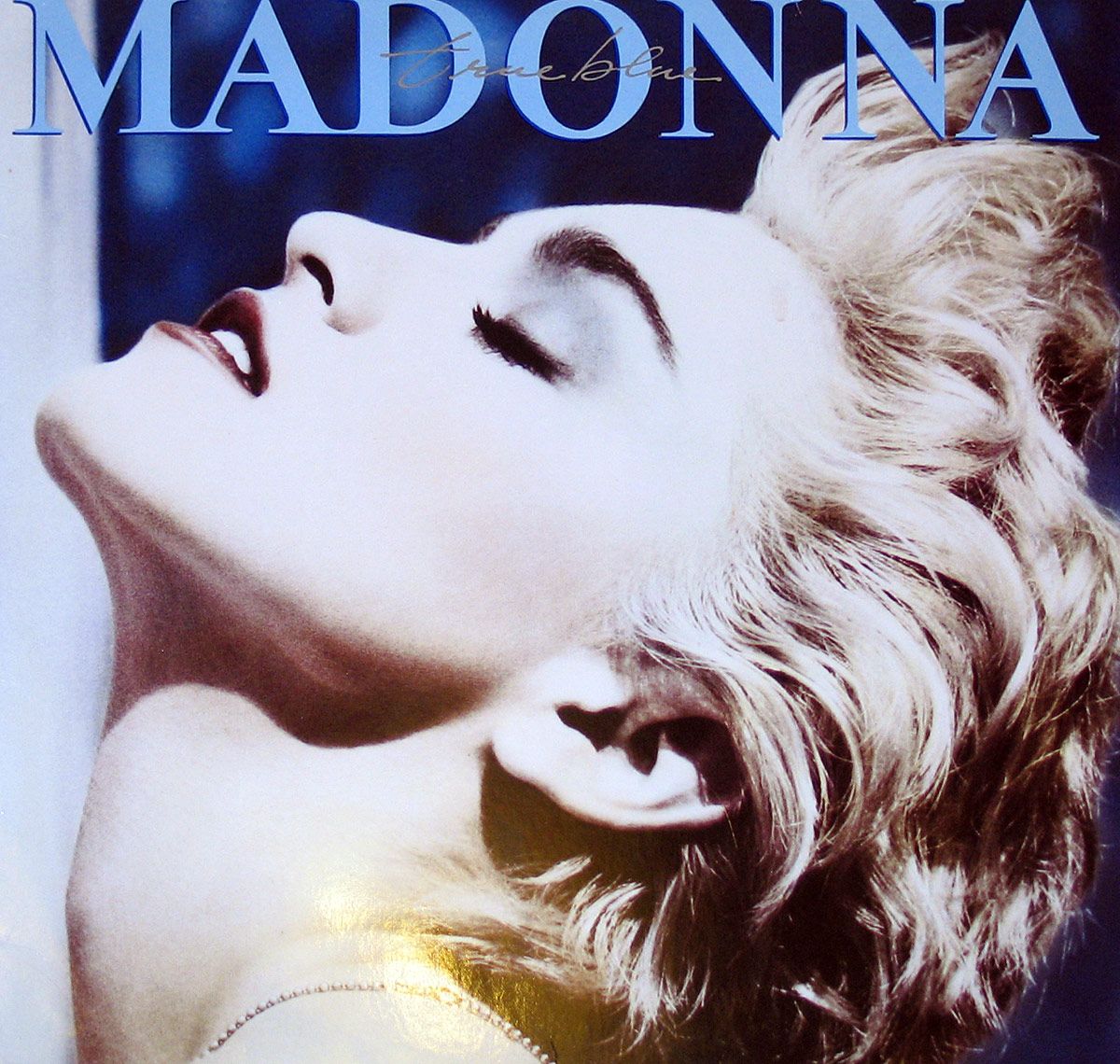
2. **Career Beginnings and the Rise of a Solo Artist (1979-1983)**Madonna’s artistic journey gained momentum in 1979 when she became romantically involved with musician Dan Gilroy, a connection that quickly led to professional opportunities. After a successful audition, she briefly performed in Paris as a backup singer and dancer for French disco artist Patrick Hernandez, even traveling to Tunisia before returning to New York in August 1979. Upon her return, she moved into an abandoned synagogue in Corona, Queens, where Gilroy lived and rehearsed, and together they formed her first band, the Breakfast Club.
In the Breakfast Club, Madonna took on multifaceted roles, showcasing her versatility by singing, playing drums, and guitar. During this time, she continued to work menial jobs, including another stint as a hat-check girl at the Russian Tea Room, while also making her acting debut in the low-budget indie film *A Certain Sacrifice*, though it would not be released until 1985. This period was crucial for her developing musicianship and stage presence, offering early experiences in composition and performance.
A significant shift occurred in 1980 when Madonna departed the Breakfast Club with drummer Stephen Bray, a former boyfriend from Michigan, to form Emmy and the Emmys. Their rekindled romance and shared musical aspirations led them to the Music Building in Manhattan, where they began to collaboratively write songs. In November 1980, they recorded a four-song demo tape, which would prove instrumental in her subsequent solo ambitions. Following this, Madonna made the definitive decision to promote herself as a solo artist, recognizing the unique potential of her individual vision.
Her solo trajectory formally began in March 1981 when Camille Barbone, who operated Gotham Records within the Music Building, signed Madonna to a contract and served as her manager until February 1982. Madonna actively engaged in the club scene, frequenting venues to persuade disc jockeys to play her demo tracks. This grassroots effort paid off when DJ Mark Kamins at Danceteria took a keen interest in her music, leading to a professional and personal relationship. Kamins facilitated a crucial meeting between Madonna and Seymour Stein, the president of Sire Records, a Warner Bros. Records subsidiary.
This meeting culminated in Madonna signing a significant deal for three singles, with an option for a full album. Kamins produced her debut single, “Everybody,” which was released in October 1982. Her first live performance of the song took place at Danceteria in December 1982, followed by her television debut on *Dancin’ On Air* in January 1983. The success of “Everybody” was quickly followed by her second single, the double A-side “Burning Up” / “Physical Attraction,” released in March 1983. Both singles achieved notable success, each reaching number three on *Billboard* magazine’s Hot Dance Club Songs chart, with “Burning Up” / “Physical Attraction” also charting at number 13 in Australia, signaling her burgeoning international appeal.
During this pivotal period, Madonna cultivated relationships with influential figures in the arts, including artist Jean-Michel Basquiat, with whom she lived at his SoHo loft, and art curator Diego Cortez. Following the commercial success of her initial singles, Warner Records enlisted Reggie Lucas to produce her debut album, *Madonna*. However, creative differences emerged, as Madonna expressed dissatisfaction with Lucas’ production techniques. She sought additional help from John “Jellybean” Benitez, the resident DJ at Fun House, who remixed most of the tracks and notably produced “Holiday,” which became her first international top-ten song. The album, released in July 1983, peaked at number eight on the *Billboard* 200 and yielded two Hot 100 top-ten singles, “Borderline” and “Lucky Star.” By late 1983, Madonna’s new manager, Freddy DeMann, arranged a meeting with film producer Jon Peters, leading to an offer for a part as a club singer in the romantic drama *Vision Quest*.
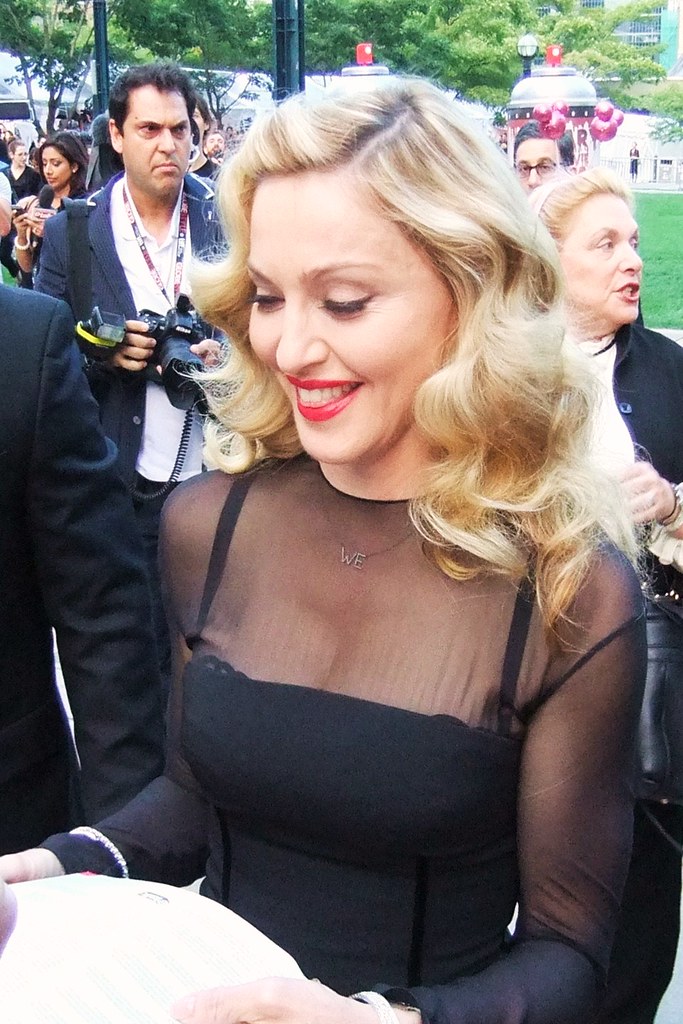
3. **Breakthrough with *Like a Virgin* and the Dawn of Global Stardom (1984-1985)**The year 1984 marked a significant escalation in Madonna’s public profile, as she gained widespread exposure through performances on popular television programs such as *American Bandstand* and *Top of the Pops*. Her burgeoning image, captivating performances, and innovative music videos rapidly began to influence a generation of young girls and women, solidifying her status as a style icon. This period saw Madonna’s aesthetic, characterized by stylist and jewelry designer Maripol, become a defining fashion trend of the 1980s, featuring lace tops, skirts over capri pants, fishnet stockings, crucifix jewelry, and bleached hair.
Madonna’s global popularity surged dramatically with the release of her second studio album, *Like a Virgin*, in November 1984. This album achieved monumental success, becoming her first number-one album in numerous countries including Germany, Italy, the Netherlands, New Zealand, Spain, the UK, and the US. It set a precedent by becoming the first album by a female artist to sell over five million copies in the United States, and was subsequently certified diamond by the Recording Industry Association of America (RIAA), ultimately selling over 21 million copies worldwide.
The album’s title track, “Like a Virgin,” served as its lead single and rapidly ascended to the top of the Hot 100 chart, holding the number-one position for an impressive six consecutive weeks. However, its suggestive themes and accompanying music video quickly drew the ire of conservative organizations, who publicly criticized the song for promoting premarital and undermining traditional family values. Moralists launched campaigns to ban both the song and its video, inadvertently amplifying Madonna’s media presence.
One of Madonna’s most iconic and talked-about performances occurred at the inaugural 1984 MTV Video Music Awards, where she delivered a memorable rendition of “Like a Virgin.” Dressed in a provocative wedding gown and white gloves, she emerged from atop a giant wedding cake before engaging in suggestive movements, rolling around on the stage floor. MTV, in a retrospective assessment, later hailed this performance as one of the “most iconic” pop performances of all time, underscoring its immediate and lasting impact on popular culture.
The album’s second single, “Material Girl,” further cemented her status, reaching number two on the Hot 100. The filming of its music video also marked the beginning of her relationship with actor Sean Penn, a significant personal and public connection that would soon lead to their marriage on her birthday in 1985. This period established Madonna not only as a musical force but also as a cultural provocateur, masterfully intertwining her music, image, and personal life into a compelling public narrative.

4. **Marriage, *True Blue*, and Navigating Controversy (1985-1987)**In February 1985, Madonna expanded her presence into mainstream films, making a notable cameo in *Vision Quest*. The film’s soundtrack featured two new singles that became significant hits: her US number-one single, “Crazy for You,” and another track, “Gambler.” Later that year, she took on the title role in the comedy *Desperately Seeking Susan*, a film that introduced the song “Into the Groove,” her first number-one single in the UK. Despite not being billed as the lead actress, her escalating popularity led the film to be widely perceived as a “Madonna vehicle,” garnering critical praise, with *The New York Times* film critic Vincent Canby naming it one of the ten best films of 1985.
Beginning in April 1985, Madonna embarked on her inaugural North American concert tour, the Virgin Tour, with the Beastie Boys as her opening act. This tour notably coincided with the peak of the “Madonna wannabe phenomenon,” where countless young female attendees emulated her distinct fashion and rebellious style. The *Like a Virgin* album continued its remarkable run, yielding two more successful singles, “Angel” and “Dress You Up,” both peaking within the top five on the Hot 100 chart, while “Angel” also topped the Australian charts.
Mid-1985 brought a new wave of media attention when *Penthouse* and *Playboy* magazines published a series of photographs of Madonna, taken when she had moonlighted as an art model in 1978. These photographs, for which she was paid as little as $25 per session due to financial need, caused a significant media uproar. However, Madonna responded with characteristic defiance, remaining “unapologetic and defiant” in the face of the controversy. The photos were ultimately sold for substantial sums, up to $100,000, and Madonna publicly addressed the matter at the 1985 Live Aid charity concert, wryly stating she would not remove her jacket because “[the media] might hold it against me ten years from now.”
June 1986 saw the release of her third studio album, *True Blue*, which Madonna dedicated to and explicitly stated was inspired by her husband, Sean Penn. The album received positive critical reception, with *Rolling Stone* remarking that it “sound[s] as if it comes from the heart.” *True Blue* spawned five highly successful singles: “Live to Tell,” “Papa Don’t Preach,” “True Blue,” “Open Your Heart,” and “La Isla Bonita,” all of which reached number one in either the US or the UK. This album achieved an unprecedented feat at the time, topping the charts in 28 countries worldwide, and remains Madonna’s bestselling studio album with sales of 25 million copies. The 1992 edition of *Guinness World Records* further recognized *True Blue* as the bestselling album by a woman of all time.
Her film career during this period faced challenges, including a starring role in the critically panned *Shanghai Surprise* in 1986, which earned her a Golden Raspberry Award for Worst Actress. She also made her theatrical debut alongside Penn in David Rabe’s *Goose and Tom-Tom*. The following year, Madonna starred in the film *Who’s That Girl*, contributing four songs to its soundtrack, including the title track and “Causing a Commotion.” In June 1987, she embarked on the Who’s That Girl World Tour, which continued until September, breaking several attendance records, including a show near Paris with over 130,000 attendees, then a record for the highest-attended female concert ever. Later that year, she released *You Can Dance*, a remix album of past hits, which reached number 14 on the *Billboard* 200. After a tumultuous two-year marriage, Madonna initially filed for divorce from Penn on December 4, 1987, though she withdrew the petition weeks later.

5. **Divorce, Pepsi Controversy, and the Artistry of *Like a Prayer* (1988-1989)**Madonna’s creative pursuits continued to diversify into the late 1980s, making her Broadway debut in the production of *Speed-the-Plow* at the Royale Theatre, running from May to August 1988. However, her personal life remained in the public eye. Following an alleged incident at their Malibu home during the New Year’s weekend, Madonna filed an assault report against Sean Penn, according to the Associated Press. She officially filed for divorce on January 5, 1989, though she reportedly requested that no criminal charges be pressed against Penn the following week, signaling a complex resolution to their highly publicized marriage.
In January 1989, Madonna entered into a significant endorsement deal with soft-drink manufacturer Pepsi, a partnership that promised to intertwine her commercial appeal with a global brand. A Pepsi commercial prominently featured the debut of “Like a Prayer,” the lead single and title track from her highly anticipated fourth studio album. However, the music video for “Like a Prayer” swiftly ignited a firestorm of controversy. It featured potent Catholic symbols, including stigmata and cross burning, and depicted a dream sequence of Madonna making love to a saint, prompting an immediate and strong condemnation from the Vatican.
Religious groups worldwide rallied to ban the commercial and initiated boycotts of Pepsi products, leading Pepsi to revoke the commercial and cancel her sponsorship contract. Despite, or perhaps because of, the intense backlash, “Like a Prayer” proved to be a massive commercial success, topping charts in numerous countries and becoming her seventh number-one hit on the Hot 100, demonstrating her ability to transform controversy into unprecedented public attention and sales.
The album *Like a Prayer* was a significant artistic achievement, with Madonna co-writing and co-producing it alongside Patrick Leonard, Stephen Bray, and Prince. Music critic J. D. Considine from *Rolling Stone* lauded the album, describing it as “as close to art as pop music gets” and asserting it as “proof not only that Madonna should be taken seriously as an artist but that hers is one of the most compelling voices of the Eighties.” The album resonated critically and commercially, peaking at number one on the *Billboard* 200 and selling 15 million copies worldwide.
Beyond the title track, *Like a Prayer* produced several other successful singles, including “Express Yourself” and “Cherish,” both of which peaked at number two in the US, as well as the UK top-five hit “Dear Jessie” and the US top-ten track “Keep It Together.” By the conclusion of the 1980s, Madonna’s indelible impact on music and culture was officially recognized by major industry publications; she was named the “Artist of the Decade” by MTV, *Billboard*, and *Musician* magazine, solidifying her status as the preeminent female artist of the era.
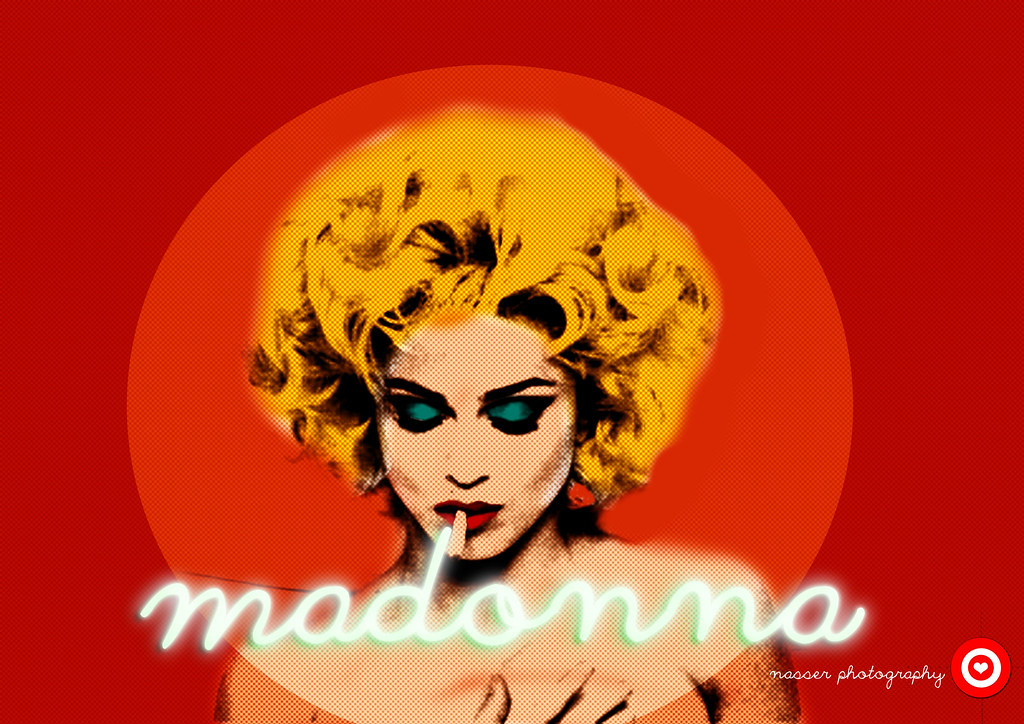
6. **The Blond Ambition Tour, *Dick Tracy*, and *The Immaculate Collection* (1990-1991)**As the new decade dawned, Madonna continued to expand her artistic portfolio, starring as Breathless Mahoney in the 1990 film *Dick Tracy*, alongside Warren Beatty in the title role. The film achieved box office success, reaching number one in the US for two weeks, and earned Madonna a Saturn Award nomination for Best Actress, showcasing her evolving cinematic presence. To complement the film, she released the soundtrack album, *I’m Breathless*, which featured songs inspired by the film’s 1930s setting. This album notably included the US number-one hit “Vogue” and the track “Sooner or Later,” further demonstrating her ability to blend film and music successfully. During the shooting of *Dick Tracy*, Madonna and Beatty began a relationship, which ultimately dissolved shortly after the film’s premiere.
April 1990 marked the launch of Madonna’s iconic Blond Ambition World Tour, which captivated audiences until August. *Rolling Stone* described the tour as an “elaborately choreographed, ually provocative extravaganza” and declared it “the best tour of 1990.” The tour’s daring and often controversial elements, particularly her performance of “Like a Virgin”—during which two male dancers caressed her body before she simulated masturbation—elicited strong negative reactions from religious groups. Madonna, however, defended her artistic choices, stating that “the tour in no way hurts anybody’s sentiments. It’s for open minds and gets them to see sexuality in a different way. Their own and others,” highlighting her commitment to pushing societal boundaries and challenging perceptions of sexuality.
The critical and commercial success of the Blond Ambition World Tour culminated in Madonna’s first Grammy Award, received for Best Long Form Music Video for the live recording of the tour. Her influence also extended into civic engagement, as she lent her voice to a Public Service Announcement (PSA) in October 1990, supporting Rock the Vote’s efforts in voter registration, encouraging political participation among her vast fanbase. This period underscored her dual role as an entertainer and a cultural commentator, unafraid to tackle sensitive social and political themes.
November 1990 saw the release of Madonna’s first greatest-hits compilation album, *The Immaculate Collection*. This landmark album included two new songs, “Justify My Love” and “Rescue Me,” and quickly achieved immense commercial success. Certified diamond by the RIAA, the album sold over 30 million copies worldwide, establishing it as the best-selling compilation album by a solo artist in history. “Justify My Love” further cemented her chart dominance, becoming her ninth number-one hit on the Hot 100, a testament to her enduring appeal.
The music video for “Justify My Love” was another flashpoint of controversy, co-starring her then-boyfriend, model Tony Ward. The video featured explicit scenes of sadomasochism, bondage, same- kissing, and brief nudity, leading MTV to deem it too sexually explicit and subsequently ban it from the network. Madonna’s response to such censorship, often one of defiance, further burnished her reputation as an artist unafraid to challenge prevailing moral codes. The year 1991 culminated with the release of her first documentary film, *Truth or Dare* (known as *In Bed with Madonna* outside North America), which chronicled her Blond Ambition World Tour and became the highest-grossing documentary of all time, a record it held for eleven years, illustrating the compelling allure of her unvarnished backstage and personal life.

7. **Maverick Records and the Era of Explicit Artistic Expression (1992-1994)**The early 1990s continued Madonna’s expansion into diverse artistic ventures, notably starring as Mae Mordabito in the 1992 film *A League of Their Own*. This role contributed to the film’s box office success and featured her song “This Used to Be My Playground,” her tenth number-one hit on the *Billboard* Hot 100, then the most by any female artist. This period underscored her enduring mainstream appeal even as she embarked on significant business initiatives.
April 1992 marked a pivotal strategic move with the establishment of Maverick, her own multifaceted entertainment company, encompassing records, film production, publishing, and merchandising divisions. Structured as a joint venture with Time Warner, the deal granted Madonna a substantial $60 million advance and an industry-leading 20% royalty rate from music proceedings. Maverick swiftly distinguished itself, growing into one of the most successful artist-run labels in history, launching careers for artists like Alanis Morissette and Michelle Branch.
This era was concurrently defined by a bold and often provocative exploration of uality in her artistic output. In October 1992, Madonna simultaneously released her fifth studio album, *Erotica*, and the controversial coffee table book, *Sex*. The explicit book, featuring images by Steven Meisel, ignited widespread backlash but sold 1.5 million copies at $50 each within days. This intense controversy, however, largely overshadowed *Erotica*, making it her lowest-selling album at the time.
Madonna further embraced provocative imagery in films like the 1993 erotic thriller *Body of Evidence*, poorly received. Her “Girlie Show” tour of September 1993, with a dominatrix persona and controversial actions, amplified public outrage. This culminated in a notorious March 1994 *Late Show with David Letterman* appearance, marked by profanity and suggestive gestures.

8. **Refinement, Motherhood, and Cinematic Triumph (1994-1997)**In response to intense scrutiny, Madonna strategically adjusted her artistic approach. Biographer J. Randy Taraborrelli identified her 1994 ballad, “I’ll Remember,” as an attempt to temper her public persona. Subsequent subdued media appearances signaled an effort to recalibrate her public image and maintain broad popularity.
Her sixth studio album, *Bedtime Stories*, released in 1994, concretized this softer image, debuting at number three on the *Billboard* 200. It produced two significant US top-five hits: “Secret” and “Take a Bow,” the latter topping the Hot 100 for seven consecutive weeks. This phase extended to *Something to Remember*, a ballads collection from November 1995.
A long-cherished ambition materialized in February 1996 as Madonna began filming *Evita* in Argentina. Her deep desire to portray Eva Perón led her to personally appeal to director Alan Parker. Upon securing the part, she underwent rigorous vocal coaching and immersed herself in Argentine history.
During *Evita*’s demanding production, Madonna encountered numerous personal challenges, including repeated illnesses and pregnancy. Despite obstacles, her performance garnered widespread critical acclaim. *Time* magazine noted, “Madonna once again confounds our expectations.” She earned the Golden Globe Award for Best Actress in a Motion Picture Musical or Comedy.
The *Evita* soundtrack, largely featuring Madonna’s vocals, was a double album success. Personally, October 14, 1996, marked the birth of her daughter, Lourdes “Lola” Maria Ciccone Leon. Biographer Mary Cross highlighted this as a significant turning point, where Madonna achieved cinematic triumph and motherhood, reinventing her image.

9. **Mysticism, Electronica, and a New Sound for the New Millennium (1998-2002)**Following Lourdes’ birth, Madonna’s artistic journey turned to Eastern mysticism and Kabbalah, influencing her seventh album, *Ray of Light* (1998). Collaborating with electronica producer William Orbit, she blended dance music with pop and British rock, reflecting a profound transformation.
*Ray of Light* earned critical acclaim, *Slant Magazine* calling it “one of the great pop masterpieces.” It secured four Grammy Awards and nominations for Album and Record of the Year, achieving global number-one status and selling over 16 million copies. Hit singles included “Frozen” and “Ray of Light.”
In 1998, Madonna established the Ray of Light Foundation for women, education, and humanitarian causes. Musically, “Beautiful Stranger” for *Austin Powers* earned a Grammy. Her film *The Next Best Thing* (2000) saw diminishing returns; its soundtrack included her ninth UK number-one single, “American Pie.”
Her eighth album, *Music* (September 2000), expanded on electronica, receiving critical praise. Collaborating with French producer Mirwais Ahmadzaï, Madonna preferred “weirdos that no one knows about.” *AllMusic* lauded *Music* as a “kaleidoscopic rush of color,” topping charts in over 20 countries and selling four million copies in ten days.
*Music* spawned three successful singles, including “Music” (a *Hot 100* number-one). Its video for “What It Feels Like for a Girl” was banned by MTV and VH1. Personally, Madonna married director Guy Ritchie after their son Rocco John Ritchie’s birth in 2000. Her Drowned World Tour (2001) earned $75 million.
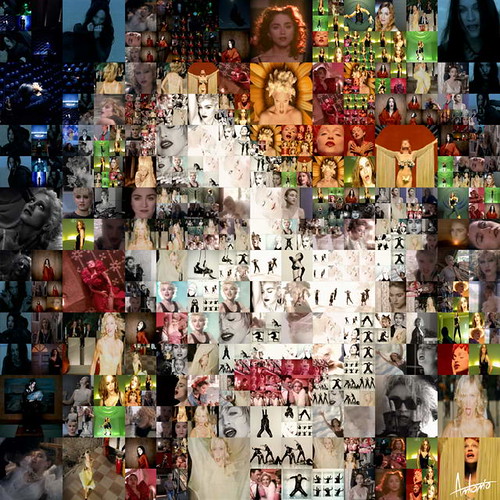
10. **Navigating Personal and Political Storms (2002-2004)**The early 2000s challenged Madonna in film and theater. *Swept Away*, directed by Guy Ritchie, was a critical and commercial failure. Her West End debut in *Up for Grabs* (2002) received negative reviews. “Die Another Day,” her James Bond theme song, also featured an “incredibly wooden” cameo. Despite criticisms, the song reached number eight on the *Billboard* Hot 100 and earned Golden Globe and Golden Raspberry nominations.
In 2003, Madonna collaborated with fashion photographer Steven Klein on X-STaTIC Pro=CeSS, an exhibition. Her ninth album, *American Life*, offered observations on American society, described as a “trip down memory lane” examining “everything I’ve accomplished.” Larry Flick of *The Advocate* praised its lyrical intelligence and adventurous nature.
The music video for *American Life*’s title track immediately drew controversy due to its graphic violence and anti-war imagery. Following the 2003 Iraq invasion, Madonna voluntarily withdrew the video, citing a “lynch mob mentality” and need to “protect children”—her first self-censorship. The song stalled at number 37; the album became her lowest-selling at four million copies.
Later in 2003, Madonna delivered a highly publicized performance at the MTV Video Music Awards, famously kissing Britney Spears and Christina Aguilera. She also provided guest vocals on Spears’ “Me Against the Music,” followed by *Remixed & Revisited*, an EP of remixes and a new track.
Expanding into children’s literature, Madonna signed for five books. *The English Roses* (2003) debuted atop *The New York Times* Best Seller list and became the fastest-selling children’s picture book, with all proceeds donated to charity. Concurrently, Madonna and Maverick sued Warner Music Group, alleging mismanagement, prompting a countersuit from Warner.

11. **Dance Floor Dominance, Global Philanthropy, and Adoption Challenges (2004-2006)**The Maverick legal dispute concluded with Warner acquiring its shares, though Madonna retained a separate recording contract. Her Re-Invention World Tour (2004) became the year’s highest-grossing tour ($120 million) and inspired her documentary *I’m Going to Tell You a Secret*. She was inducted into the UK Music Hall of Fame and ranked on *Rolling Stone*’s “100 Greatest Artists of All Time.” She also participated in Tsunami Aid and Live 8 in 2005.
A distinct artistic shift defined *Confessions on a Dance Floor* (2005). Contrasting with *American Life*’s political tone, Madonna expressed a desire for “fun,” “dance,” and “buoyancy,” aiming to impart happiness. Structured like a DJ-mixed club set, the album garnered universal critical acclaim, with *Billboard* calling it a “welcome return for the Queen of Pop,” earning a Grammy.
Commercial success was monumental: *Confessions on a Dance Floor* and its lead single, “Hung Up,” reached number one in a record-breaking 40 and 41 countries respectively, securing a *Guinness World Records* entry. “Hung Up” notably sampled ABBA’s “Gimme! Gimme! Gimme! (A Man After Midnight),” a rare permission, praised by Björn Ulvaeus. “Sorry” became Madonna’s twelfth UK number-one.
Madonna’s Confessions Tour (2006) attracted 1.2 million attendees and grossed over $193.7 million, a record for a female artist. The tour sparked controversy with religious symbols during “Live to Tell,” prompting boycott calls. Amidst these dialogues, IFPI reported Madonna sold over 200 million albums worldwide, reaffirming her unparalleled commercial success.
This period also saw significant philanthropic expansion with Raising Malawi, funding an orphanage. Her decision to adopt David Banda in October 2006 generated intense public and legal scrutiny due to Malawian law, which typically required residency. Madonna defended her actions on *The Oprah Winfrey Show*, stating that no written Malawian laws governed foreign adoption and detailing Banda’s prior illness. Her continued engagement in global causes highlighted her evolving role as a global figure.
As Madonna transitioned into the latter half of the 2000s, her journey remained defined by audacious artistic statements, innovative business ventures, and a profound commitment to philanthropy, frequently intertwined with the very controversies that characterized her career. From establishing her own entertainment empire to embracing mysticism and leading global humanitarian efforts, she consistently demonstrated an unwavering resolve to evolve, provoke, and connect, leaving an indelible mark on music, culture, and social discourse. Her ability to navigate intense public scrutiny while remaining at the vanguard of pop music and cultural influence stands as a testament to her singular vision and sustained impact as a multifaceted global icon.

